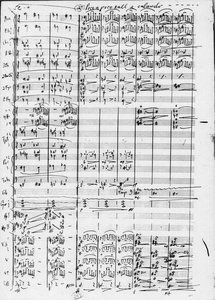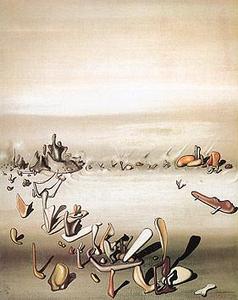It’s been a busy time and many plans for entries remain unrealized. Having delayed my Moby-Dick project until I can get back my access to the OED, I instead took up reading all of Western Literature, so as you can imagine I have some reports to post about that. Right now two, which is how many items of Western Literature I have thus far read. But they’re not done. Then there’s my very long and not-interesting enlistication of all the goofy live shows I saw in August – that’s taking forever to finish. Plus there’s an appendix to that, of the other stuff I read or saw in the past several months. Haven’t even started it. Also, that thing I wanted write about John Williams that’s been sitting here half-finished for a year. I have some new thoughts for that. And then the whole issue of the meme dictionary. You haven’t heard the last of that, but it’s complicated. I feel like there’s a lot to attend to on this site just to live up to my own meager-grand plans for getting out my thoughts. Getting out my thoughts takes forever!
So anyway, none of that stuff is ready to post. But it’s late and I feel like I can probably get this one thing out without too much trouble.
Most of my thinking about those various books and music and shows and things has been colored, since that last entry, by my “art thought,” which has now taken on the character of being a whole “theory of art.” Really it’s just a certain “angle on art” that I’m finding very valuable. In addition to All of Western Literature I’m also reading The New Penguin History of The World, and early on – which is where I am – he says that, while we don’t know for sure what it was for, clearly cave art was carrying some burden of communication in an era before writing. Then he goes on to say that it probably had ritual or magical significance as well. I don’t doubt it, but the first part is what my thoughts have been focussed on.
When I said last time that art is the projection of an individual’s mental model of the world – and that it thus allowed others to interpret the world on congruent models – I was speaking and thinking at the extremely analytic end of a spectrum that also includes very familiar ways of expressing the same thing. Things like “art expresses inner truths that we cannot put into words,” etc. are basically the same thought. But whenever I heard people saying things like this, I used to think they were talking about inner truths like “loss is a shadow crossing the soul” or whatever – essentially, inner experiences, and so probably emotional ones. Representation of the outer world can only be tied to this sort of “meaning” in art by being a figurative depiction of an emotional state, or as a stimulus meant to provoke a quasi-emotional state such as “the appreciation of beauty.”*
But what I didn’t see is that any knowledge of the outer world is an inner experience. I guess a related thing that I didn’t see is what Plato was going on about. All that talk about the real essence of perfect “horseness,” unattainable by flawed earthly horses, struck me as near-nonsense deriving from a simple confusion of word with thing. “Words are just useful tags!” I wanted to shout at Plato. “People made them up to get things done!” And to some degree I still feel that way. But the deeper issue managed to escape me: that even just to think of things as “things” is an interpretation, is something people made up to get things done. Plato writes about “forms” and puts them in some world other than the real world, but – as far as I know – he never says that the world of forms is, in fact, the mental mechanism. In fact, I think he goes the other way and says that the world of forms is some heaven-type place outside of us. I don’t really know. Gotta make sure Plato’s on the list of All Western Literature. Yup, there he is. So all in due time.
We only have the five senses, but in the brain they’re all plugged into one another via a central program – I generally don’t like computer analogies like this because they seem smug and nerdy, but right now I need it – via a central program that is doing all kinds of complicated “world-simulation.” Without that program, the five senses would have nothing to say to one another. Well, maybe smell and taste would get along. But sight and touch would have no idea. The central program is necessary, is the root of what we’re doing as minds, and is so incredibly accurate in its predictions that we generally forget about it. But it has nothing directly to do with the world. The world is apparently made of some kind of sticky stuff. The program in our brain deals in very different terms.
Verbal communication is one of the functions of the program; it deals in the program’s terms. It cannot, without fancy workarounds, reprogram the program itself. Art, however, is about program maintenance. The program, though it doesn’t quite know why, does its best to portray the nature of the program itself. Then other brains, running a complementary routine, try to determine what they can about the program portrayed and, if the signals of prestige, sanity and efficacy are positive enough, incorporate some of that program into their own.
A better metaphor than this is cross-pollination – art is like the pollen strewn by desperate plants. Sexual reproduction in general. How do brains reproduce? Not just ideas, which for their meanings are already dependent on certain cultural programs, but cultural programs themselves? All culture is by nature reproductive. In fact, isn’t the value of all culture exactly that it reinforces itself and thus maintains solidarity? In this way, art can be seen as functioning exactly like any other feature of culture – it represents and thus communicates/reinforces the mental programming of its participants. A definition of “art,” if we need one, could then be: “any aspect or artifact of culture that has no utility other than to communicate and reinforce the mental program.” Interestingly, this particular definition does not resolve the “What Is Art” debates over Duchamp and other nudniks**, but they are left open for more interesting reasons. To me this is a very promising feature of this definition of art. The problem with the urinal in the museum is not that it is not beautiful or that it is not made by the artist or any of that – under this definition, the problem is that it quite possibly communicates nothing about the mental life of the artist and can be incorporated in no way to the mental life of the audience. It is merely a prop, a word, in some other kind of very specific, “in-program” communication, about art culture and the definitions of art. Obviously, this is up for debate. But isn’t that a more valuable debate than the usual one?
Art is this, among other things. Clearly it has some ritual significance as well, just like J.M. Roberts said. And the cultural apparatus that has developed around art is as gnarled and turgid as they get, so I’m not claiming that this sort of explanation is the explanation for all art. Far from it. But it does feel, to me, like the “pure” “essential” side of art, the side to which I want to attend. Conversely, on my trip through some irritating exhibits at the Tate Modern, I found that it made a good litmus test for dismissing works.
Right, I made notes about that and wanted to put them here. That was the whole point of my writing this second entry on the same topic. But all I’ve managed to do is reiterate, at greater length and more loopily, what I wrote last time. I can hear them quietly starting to play me off the podium so I guess I’ll post those notes later. Ugh. Not even the sense of having accomplished one of my meaningless self-appointed tasks. I still have it all ahead of me.
* Yes, it took me a long time to find just the right image. Previous choice was this. This was also a strong contender but the artist ruined it.
** This year, for the first time, I saw real, non-prankish works of Duchamp, at the Philadelphia Museum of Art, and they were good. So all right, so maybe he’s not a nudnik.

